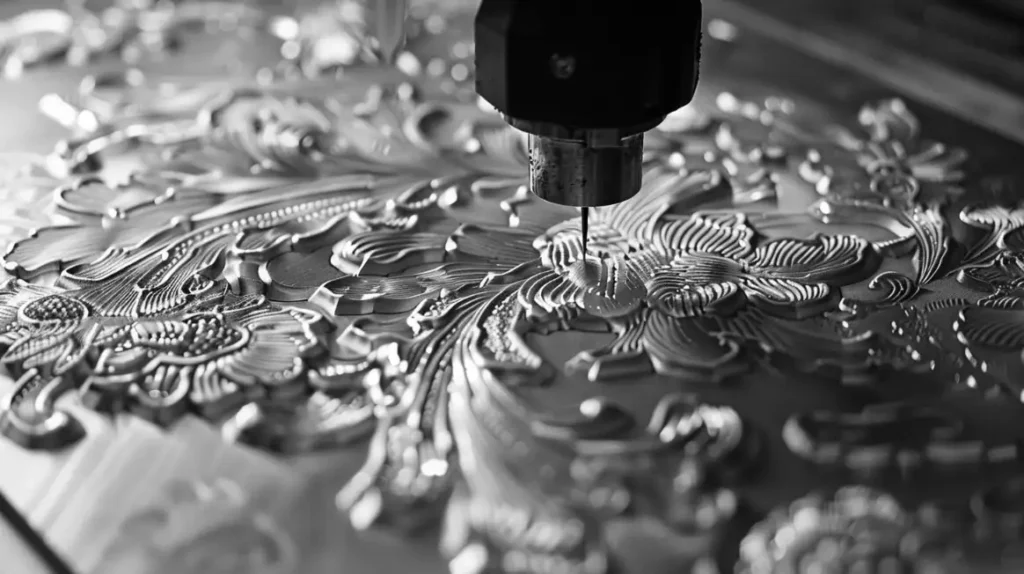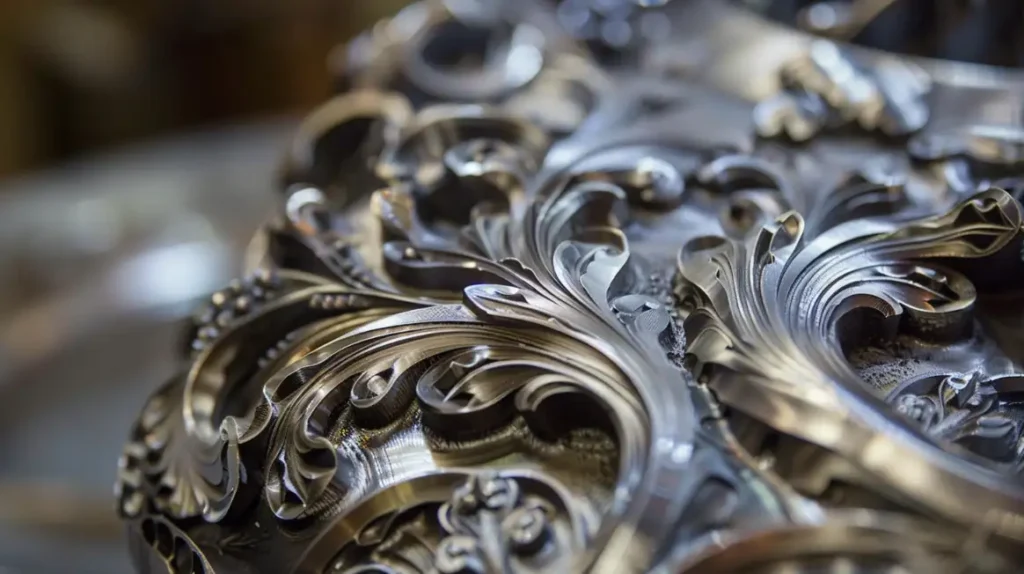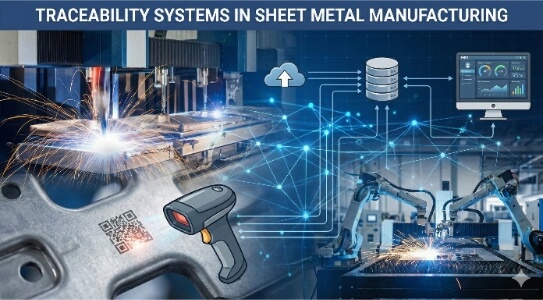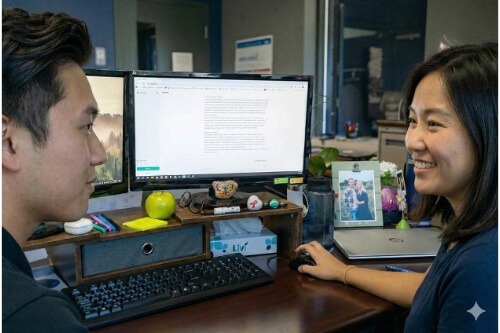Do you need precise, durable engravings for metal, plastic, or wood? CNC engraving offers automated precision, repeatable quality, and quick production. This technology helps you save time and deliver engraving results your clients expect, allowing your business to grow and maintain a competitive edge.
This article takes an in-depth look at CNC engraving, exploring its intricacies, many types, and significant advantages. We will describe its operational complexity, material adaptability, and wide range of applications.
What is CNC Engraving?
CNC engraving involves machines controlled by computers that carve designs or text onto surfaces. These machines follow exact digital instructions to create precise patterns. CNC engraving can be done on metal, plastic, wood, and many other materials.
This method removes human mistakes, speeds up work, and maintains steady quality. Many industries use CNC engraving for logos, serial numbers, labels, and decorative designs.
How Does CNC Engraving Work?
CNC engraving includes several simple steps. These steps help produce accurate designs, reliable results, and efficient production every time the machine is used.
Step 1: Preparing the Design
First, you create the design using computer software called CAD. You can design or import patterns, text, or logos into the software. Clearly set the size and depth of the engraving. After finishing your design, CAM software changes it into machine instructions (G-code) for the CNC machine.
Step 2: Setting Up the Material
Next, you place the material securely on the CNC machine’s work surface. It’s essential to clamp or fix the material properly. This stops the material from moving during engraving.
Step 3: Choosing the Tool
After preparing the material, you choose the correct engraving tool. Standard tools include end mills, engraving bits, and diamond drag tips. The tool choice depends on the material and how deep the engraving should be.
Step 4: Calibrating the Machine
Before you start engraving, you need to calibrate the CNC machine. This means setting the correct starting position, called the “zero” or “origin.” You also check that the tool is in the proper position.
Step 5: Starting the Engraving
Now, everything is ready, and you can begin engraving. The CNC machine follows your instructions strictly. It carefully cuts the design into the material.

Types of CNC Engraving
Different materials and applications call for specific engraving methods. Each technique offers unique advantages for particular use cases.
Rotary CNC Engraving
Rotary engraving uses spinning cutting tools to remove material physically. A motorized spindle rotates the cutting bit at high speeds while moving across the workpiece. The depth of the cut is controlled precisely by the Z-axis movement.
This method creates visible grooves in the material surface. The cutting action produces crisp edges and allows for varying depths within a single design. Bits come in different shapes (V-shaped, flat, rounded) for various effects.
Rotary engraving creates durable marks that withstand wear and environmental exposure. The physical grooves allow for paint filling to enhance visibility.
Laser CNC Engraving
Laser engraving uses focused light beams to vaporize the material. The laser head moves across the surface without physical contact. Different power settings control mark depth – from surface discoloration to deep engraving.
There are three main types:
- CO2 lasers (for organics)
- Fiber lasers (for metals)
- Diode lasers (for light-duty work)
The process creates high-contrast marks through material removal or surface alteration. Since there is no physical contact, no tool wear occurs.
Diamond Drag CNC Engraving
Diamond drag uses a sharp diamond tip to scratch the material surface. Unlike rotary engraving, the tool doesn’t spin – it’s dragged across the surface under pressure. The machine controls the downforce and movement speed.
This method produces clean, polished lines without material removal. The diamond tip lasts for millions of cycles without needing replacement, and no heat is generated during the process.
Diamond drag is perfect for decorative work where a polished finish is desired. It’s less common for industrial applications but excels in specialty engraving situations.
Materials Suitable for CNC Engraving
Choosing the right material is essential for engraving quality and appearance. Different materials need different methods to get clear and accurate results.
Metal Engraving
Metals are popular for engraving because they last long and look professional. Typical metals include aluminum, brass, stainless steel, copper, and titanium. These metals can handle deep and detailed engravings, making them great for industrial parts, labels, signs, and jewelry.
Wood Engraving
Wood is easy to engrave and lets you create detailed designs. Popular types of wood include maple, walnut, oak, cherry, and plywood. CNC engraving creates clear, attractive designs on wood surfaces. Wood engraving is perfect for decorative artwork, signs, personalized gifts, and furniture details.
Plastics and Acrylics
Plastics and acrylics are affordable and produce attractive engravings. Common choices are acrylic, ABS, polycarbonate, and PVC. These materials allow for clear and precise engravings. They are often used for signs, nameplates, labels, electronic cases, and promotional items.

Cost Factors in CNC Engraving
Understanding cost drivers helps you budget effectively and optimize your engraving projects. Here’s what impacts your final price:
Material Selection
The material you choose significantly affects the cost of CNC engraving. Metals like titanium or stainless steel are more expensive and more complicated to engrave than softer materials like wood or acrylic. The hardness and thickness of the material also impact tool wear and engraving time, which can increase costs.
Design Complexity
Detailed engravings need more time and precise tool paths, which means longer machine run times and higher costs. Simple designs are quicker, but more complex patterns or fine details take more time and processing power.
Tooling Costs and Machine Maintenance
Tools and machines wear out over time, adding extra costs. High-quality tools, especially those for hard metals or detailed designs, may cost more initially but last longer. Regular machine maintenance is also essential to keep everything running smoothly and avoid breakdowns.
Tolerance and Surface Finish
Tighter tolerances and smoother finishes need more precise engraving methods and often take longer. High-quality finishes require slower engraving speeds, finer tools, or extra post-processing. While this results in a better final product, it also raises production costs.
Advantages of CNC Engraving
CNC engraving offers several benefits, making it a popular choice for businesses seeking high-quality and efficient production.
Precision and Accuracy
The computer-controlled system follows the exact design, ensuring every engraving is as planned. This is especially important for detailed logos, serial numbers, or intricate patterns that need to be consistent across many pieces.
Increased Speed and Productivity
Automation reduces the time needed for each piece, allowing manufacturers to create more engravings in less time. The system can run continuously, boosting productivity without losing quality.
Enhanced Customization and Personalization
CNC engraving offers many customization options. You can engrave logos, text, serial numbers, or custom designs onto various materials with great detail.
Reduced Material Waste and Cost Efficiency
CNC engraving is efficient with material use. The precise nature of the machine reduces waste, helping to lower material costs. The accuracy of the engravings also minimizes the chance of mistakes, cutting down on scrap and rework.
Practical Applications of CNC Engraving Across Industries
CNC engraving is flexible and used in many industries. From detailed markings to decorative finishes, this technology serves many purposes.
Automotive and Aerospace Components
In the automotive and aerospace industries, CNC engraving is used to mark parts with serial numbers, part identifiers, barcodes, and other key information. These markings ensure traceability, help with quality control, and meet regulatory standards.
Medical Equipment and Instruments
CNC engraving is essential in the medical field. It is used to engrave key information on medical equipment, tools, and instruments. This includes serial numbers, lot codes, and manufacturer details on surgical instruments, implants, and diagnostic devices.
Electronics and Semiconductor Marking
In the electronics and semiconductor industries, CNC engraving marks circuit boards, microchips, and other components. This includes part numbers, logos, and manufacturer information. These markings help improve product identification and ensure compliance with industry standards.
Jewelry and Artisanal Creations
CNC engraving is widely used in jewelry to create detailed designs, engravings, and personalized items on rings, bracelets, and other accessories. Artisans also use it to create unique designs for art pieces, plaques, and trophies.
Conclusion
CNC engraving is a highly efficient and precise method for creating detailed designs on various materials, such as metals, plastics, wood, and acrylics. It offers significant advantages over traditional engraving methods, including faster production times, improved accuracy, and the ability to handle complex designs with ease.
Ready to elevate your production with CNC engraving? Contact us today to learn how we can help you achieve precise, high-quality engravings for your business needs!
FAQs
What is the difference between engraving and etching?
Engraving involves using a tool to cut into the material, creating a more profound, permanent mark. Etching, on the other hand, uses chemicals or lasers to remove a thin layer from the surface, resulting in a shallower mark.
What cutters or bits are needed for CNC engraving?
The type of cutter or bit depends on the material and design. End mills are commonly used for general engraving. V-bits are great for delicate, angled designs. Ball nose bits create smooth, curved engravings.
Which software is used in a CNC engraving machine?
CNC engraving machines create designs using CAD (Computer-Aided Design) software. Popular options include AutoCAD and Fusion 360. After the design is made, CAM (Computer-Aided Manufacturing) software, such as Mastercam or ArtCAM, turns it into G-code.
More Resources:
Materials for CNC – Source: Fictiv
Rotary Engraving Machines – Source: Rolanddga
Hey, I'm Kevin Lee

For the past 10 years, I’ve been immersed in various forms of sheet metal fabrication, sharing cool insights here from my experiences across diverse workshops.
Get in touch

Kevin Lee
I have over ten years of professional experience in sheet metal fabrication, specializing in laser cutting, bending, welding, and surface treatment techniques. As the Technical Director at Shengen, I am committed to solving complex manufacturing challenges and driving innovation and quality in each project.




